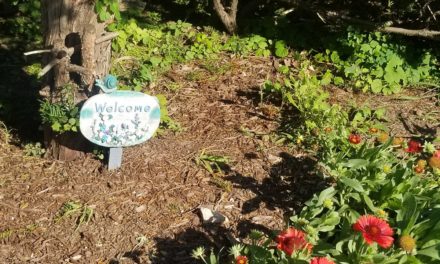How to meditate: First, fold your legs into an impossible pretzel – not the criss-cross-applesauce you learned in pre-school, but the uncomfortable (for the non-yogis among us) Lotus position.
Next, close your eyes, touch your hands together in some weird way, or place them face up on your knees and make a giant OOOOMMMMMM sound with your mouth.
While doing this, clench random muscles in your body to align invisible things and keep the good energy in while figuring out which energy is bad and breathing it out.
Got all that? Good. Now, hold this pose for at least three hours. If you even think of itching that inevitable itch, or if your mind wanders to what you might eat for lunch, or – heaven forbid – you relax enough to take a little nap – you have failed. Return to the beginning and start again.
Before I actually started meditating, that’s what I thought meditation was.
When people suggested that I might want to try it, I would look at them like they had three heads. “Me?!” I’d say, “I can’t even sit through a whole TV episode without moving around, how on earth am I supposed to just sit still and clench weird things for an hour?”
While meditation certainly could include some facets of the description above, it doesn’t have to. It turns out that there are a lot of right ways to meditate.
For me, that means sitting in a quiet place and clearing my mind for 15 minutes, often focusing on my breath. But since the goal is achieving your own mental clarity, it’s really up to you to determine the best way to get there.
Meditation is the opportunity to spend some time decluttering your mind. So much of the day, our brains are all over the place: What should I make for dinner? Do the kids have summer sandals that fit? Is that project done for work? What did that person cut my in the supermarket checkout line? WTF! OMG!
Complete. Mental. Overload.
This constant running of thoughts in our brains causes stress and anxiety. We mull on and over things we can’t control or situations that can’t be changed instead of being present and looking at the way things are right now. Meditation trains the mind to focus on the now, to let go of the constant run of thoughts and worries – at least for a little while.
A wide variety of scientific and medical journals and publications have written about the benefits of meditation and mindfulness. Don’t want to wade through the numerous articles? Check out this great infographic from the Huffington Post.
Better yet, let me boil it down for you: There is abundant evidence – including brain imagery – that show a wide range of benefits from meditation, including improvement of emotional stability and immunity, ability to deal with stress, and positive impacts on: inflammation, fibromyalgia, psoriasis, anxiety, depression, and post-traumatic stress disorder.
Clearly, if you are dealing with a major health issue, you should consult your doctor. But regular meditation has been shown to change your brain and how it responds to stress and emotional triggers.
I meditate daily and have for several years now. My morning routine is: Go to the gym, come back, put on a face mask, (just because I’m meditating doesn’t mean I can’t multitask!), and settle in for 15 minutes of meditation before my shower.
Meditation has empowered me to appreciate the present, even when my life is especially chaotic and difficult. When I meditate I can take a step back and find the positive in a seemingly negative situation. I can focus my brain on being more solution-oriented.
If you have been interested in trying meditation, but feel a little overwhelmed, there are many ways to start. I’d recommend finding a time and a space that is convenient for you on a regular basis. This could be in the morning at the kitchen table, sitting on the floor of your living room, a quiet space at work over lunch, or possibly while lying in bed before falling asleep.
And if you DO fall asleep while meditating? Good for you. We could all use a little more sleep.
Maybe leaving your house and going to a place where you meditate with others is what is best for you. Or perhaps you’d like to try walking meditation, while enjoying some quiet time outdoors.
It often helps to start with guided meditation. You can do that through an app, website, online, or even in person at a class. Try different things, do what’s best for you and then pat yourself on the back for giving that wheel-running hamster in your brain a rest, and maybe achieving a few moments of clarity in the process.
Resources:
– Apps: Most apps are free initially, allowing you to try the different options and find out which one you like before committing to. a fee. Some of the wide variety of apps out there: Calm, Headspace, 10% Happier, Insight Timer.
– YouTube. A great place to find many different guided meditations, including many that focus on a specific issue you might like to work on. Do a simple meditation search on your favorite podcast app, and you’ll find many guided meditation podcasts that appeal to beginners and the very advanced alike.
– In person: If want some in-person meditation instruction, the Shambala Center in Albany is a great option. There are classes nearly every night, also ranging from beginner to advanced. Additionally, mindfulness and meditation is an important component of yoga, and many yoga local venues offer classes focused on these areas.


